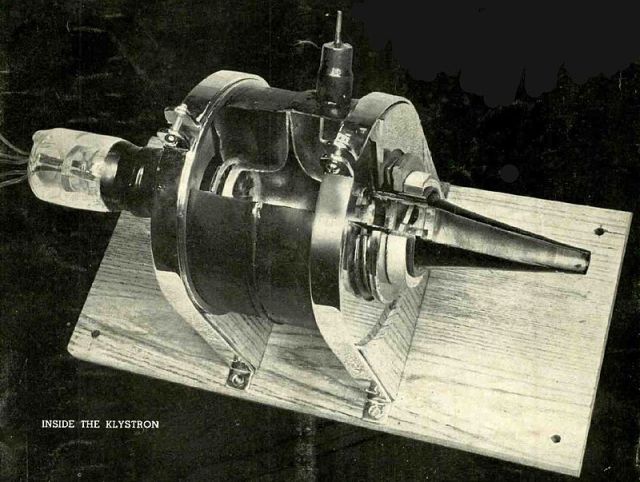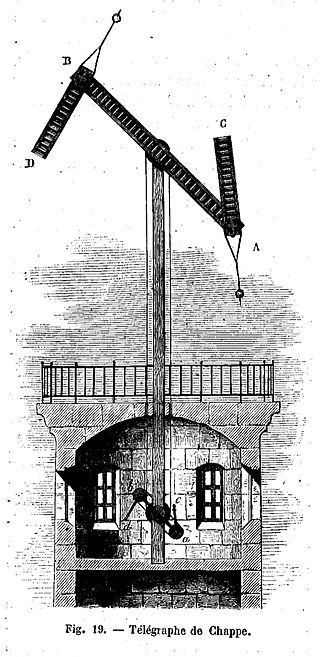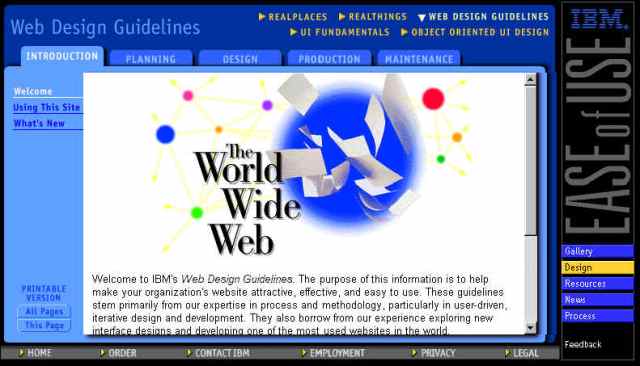

| Online: | |
| Visits: | |
| Stories: |
Milestones in the History of Technology: Week of February 29, 2016

The first prototype klystron, manufactured by Westinghouse in 1940. (Source: Wikipedia)
February 29, 1939
The klystron vacuum tube, the first significantly powerful source of radio waves in the microwave range, is set up at the Boston airport and a plane successfully blind-lands before a group of top military officials. The klystron, invented by Russell and Sigurd Varian at Stanford University, is used to amplify small signals up to a high power levels applicable in radar, deep-space satellite communications and coherent RF power sources in applications like linear particle accelerators.
March 1, 1971
“A Growth Industry Grows Up,” an article on the computer industry, is published in Time magazine. The article opens with the words “It was only 20 years ago that the world’s first commercially sold computer, a Univac Model I, was installed at the Bureau of the Census in Washington. Today hardly any type of commercial or human activity in the U.S. goes unrecorded, unpredicted or unencumbered by computers.”
It continued with: “For the past three years, one-tenth of new U.S. investment in plant and equipment has gone into computers, enough to make electronic data processing the nation’s fastest-growing major industry. Last year computer-industry revenues rose 17%, to some $12.5 billion. Still, the computer industry may in some ways be a victim of its own success. Computer technology has raced ahead of the ability of many customers to make good use of it. Not long ago, the Research Institute of America found that only half of 2,500 companies questioned felt that their present machines were paying for themselves in increased efficiency.”
And ended with: “For all the change that it has already wrought, the computer has barely begun to transform the methods of business and very probably the character of civilization.”
The size of the US computer industry in 1970, $12.5 billion, is about $78 billion in today’s dollars. According to IDC, last year the global IT industry was $2.46 trillion.

Chappe’s telegraph (Source: Wikipedia)
March 2, 1791
The Chappe brothers send the message “si vous réussissez, vous serez bientôt couverts de gloire” (if you succeed, you will soon bask in glory) between Brulon and Parce, a distance of ten miles, over their optical telegraph, using a combination of black and white panels, clocks, telescopes, and codebooks. Richard John in Network Nation:
The French optical telegraph relied on specially trained operators to relay coded messages along a chain of towers spaced at intervals of between 10 and 20 miles: the maximum distance by which an operator could interpret the signals using the telescopes of the day… The French optical telegraph had intrigued Morse ever since he had observed it first hand during a visit to France in the early 1830s… The superiority of the electrical telegraph over the optical telegraph was for Morse not only technical but also political. The medium was the message: the optical telegraph was monarchical, the electric telegraph republican… Unlike the optical telegraph, the electric telegraph was “more in consonant” with the country’s civic ideals because, like the mail system, it could ‘diffuse its benefits alike’ to the many and the few.
March 4, 1840
Alexander S. Wolcott and John Johnson open the first commercial photography studio in New York. Burton’s Gentleman’s Magazine described Wolcott as having “nearly revolutionized the whole process of Daguerre… [who] as is well known, could not succeed in taking likenesses from the life, and, in fact, but few objects were perfectly represented by him, unless positively white, and in broad sunlight. By means of a concave mirror, in place of ordinary lens, Mr. W. has succeeded in taking miniatures from the living subject, with absolute exactness, and in a very short space of time.”
In the years that followed, popular interest swelled and commercial studios proliferated. One commentary in the press, in 1843, described “beggars and the takers of likeness by daguerreotype” as the only two groups of people who made money in New York “in these Jeremiad times”: “It will soon be… difficult to find a man who has not his likeness done by the sun…”
By the early 1850s a visitor commented that “there is hardly a block in New York that has not one or more of these concerns [daguerreotype studios] upon it, and some of them a dozen or more, and all seem to be doing a good and fair amount of business.”
[Source: Jeff Rosenheim, “‘A Palace for the Sun’: Early Photography in New York City,” in Art and the Empire City, 2000]
March 5, 1839
Samuel F. B. Morse and Louis-Jacques-Mande Daguerre meet in Daguerre’s studio, in Paris, France. Morse, a celebrated portrait painter, wrote to his brother: “[The Daguerreotype] is one of the most beautiful discoveries of the age…. they resemble aquatint engravings, for they are in simple chiaro-oscuro and not in colors. But the exquisite minuteness of the delineation cannot be conceived. No painting or engraving ever approached it. … The impressions of interior views are Rembrandt perfected.”
Jeff Rosenheim writes in Art and the Empire City:
Morse in turn invited Daguerre to a demonstration of the electric telegraph, and on the very day that they met this second time, Daguerre’s Diorama–and with it his notes and early daguerreotypes–burned to the ground. This tragic coincidence forever linked the fate of these two figures and ingratiated Daguerre to Morse…
No sooner had [Morse] read [in September 1839] the details of the [daguerreotype] process than he built two portrait studios–glassed in-boxes with glass roofs–one atop his residence at the [University of the City of New York] on Washington Square, and one on the roof of his brothers’ new building… Morse dubbed the latter “a palace for the sun.” Working in this light-filled studio with John Draper, a fellow professor at the university, Morse soon succeeded in shortening the exposure times by polishing the silvered plates to a higher degree than previously attained and adding bromine, an accelerator, to the chemistry. By late 1839 or early 1840 they had succeeded in making portraits.
Despite all the potential scientific uses for the daguerreotype–Morse had suggested that the discovery would ‘open a new field of research in the depths of microscopic Nature’–the most enduring legacy of the new medium was its role as a preserver of likenesses of men and women, not details of nature.
March 5, 1975
The Homebrew Computer Club meets for the first time, with 32 “enthusiastic people” attending.
Wikipedia: “Several very high-profile hackers and IT entrepreneurs emerged from its ranks, including the founders of Apple Inc. The short-lived newsletter they published was instrumental in creating the technological culture of Silicon Valley… It was started by Gordon French and Fred Moore who met at the Community Computer Center in Menlo Park. They both were interested in maintaining a regular, open forum for people to get together to work on making computers more accessible to everyone.”
The Apple I and II were designed strictly on a hobby, for-fun basis, not to be a product for a company. They were meant to bring down to the club and put on the table during the random access period and demonstrate: Look at this, it uses very few chips. It’s got a video screen. You can type stuff on it. Personal computer keyboards and video screens were not well established then. There was a lot of showing off to other members of the club. Schematics of the Apple I were passed around freely, and I’d even go over to people’s houses and help them build their own.
The Apple I and Apple II computers were shown off every two weeks at the club meeting. “Here’s the latest little feature,” we’d say. We’d get some positive feedback going and turn people on. It’s very motivating for a creator to be able to show what’s being created as it goes on. It’s unusual for one of the most successful products of all time, like the Apple II, to be demonstrated throughout its development.
Today it’s pretty obvious that if you’re going to build a billion-dollar product, you have to keep it secret while it’s in development because a million people will try to steal it. If we’d been intent on starting a company and selling our product, we’d probably have sat down and said, ‘Well, we have to choose the right microprocessor, the right number of characters on the screen,’ etc. All these decisions were being made by other companies, and our computer would have wound up being like theirs-a big square box with switches and lights, no video terminal built in… We had to be more pragmatic.

March 6, 1997
The first-ever nationally televised awards ceremony devoted to the Internet is broadcast. 700 people attended the first year of the annual Webby Award event at Bimbo’s Night Club in San Francisco.

Weird Wide Web book cover 1997

Search engine Alta Vista 1997

IBM’s Web design guidelines 1997
News from the past and future of information http://infostory.wordpress.com/
Source: http://infostory.com/2016/03/01/milestones-in-the-history-of-technology-week-of-february-29-2016/



